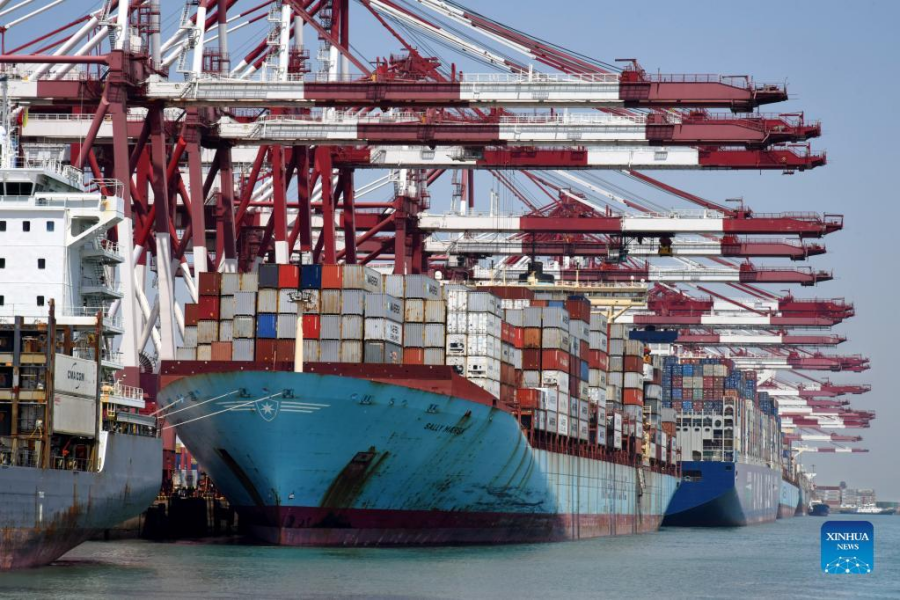Highlights of China's foreign trade development in past decade

Photo taken on May 1, 2022 shows a container vessel docking at the Qianwan Container Terminal in Qingdao, east China's Shandong Province. [Xinhua/Li Ziheng]
BEIJING -- During the past decade, China has seen notable progress in boosting the high-quality development of foreign trade amid its efforts to build an open economy, with the trade volume continuously expanding and structures improving.
The total imports and exports of goods have climbed from 24.4 trillion yuan (about 3.6 trillion U.S. dollars) in 2012 to 39.1 trillion yuan in 2021, further consolidating China's role as the world's largest goods trading country, Wang Lingjun, deputy head of the General Administration of Customs, said at a press conference Friday.
Wang noted China has remained the world's largest goods trading country for five consecutive years since 2017. He added the country's foreign trade showed greater competitiveness, played a bigger role in driving economic growth, and established a stronger foundation for long-term sound development.
Here are some highlights of the country's efforts in sustaining the development of foreign trade and leveraging its role in advancing high-level opening-up.
OPTIMIZED STRUCTURE
In line with the steady expansion of China's foreign trade volume during the past decade, the country has also seen an improving trade structure.
The foreign trade of China's less tapped central and western regions has taken an expanded share in the country's total foreign trade volume, Sheng Qiuping, the vice minister of commerce, said at the press conference.
The share of exports of the central and western regions in 2021, for instance, has expanded 5.9 percentage points from 2012, Sheng said.
Meanwhile, high-tech and high value-added products such as automobiles and ships have gradually become new growth points, with the exports of automobiles increasing by 150 percent during the 2012-2021 period.
DEEPER BELT & ROAD TIES
China's economic and trade ties with countries along the Belt and Road have strengthened significantly over the past decade.
From 2013 to 2021, the annual trade volume between China and countries along the Belt and Road expanded from 1.04 trillion U.S. dollars to 1.8 trillion dollars, marking an increase of 73 percent, Sheng said.
During this period, China's direct investment in countries along the Belt and Road totaled 161.3 billion dollars, while 32,000 enterprises were established in China by these countries, with a combined investment of 71.2 billion dollars, Sheng added.
China signed new contracts worth about 1.08 trillion dollars with countries along the Belt and Road in the period for engineering projects in transportation, electricity, and other areas, he said.
"Despite the protracted COVID-19 pandemic and complicated international situation, the building of the Belt and Road Initiative continues to demonstrate strong resilience and vitality, injecting strong impetus into global openness and cooperation and world economic recovery," Sheng said.
FLOURISHING E-COMMERCE TRADE
China's cross-border e-commerce has grown rapidly in recent years, with imports and exports of these platforms jumping 18.6 percent year on year to 1.92 trillion yuan last year, Sheng said.
Since 2015, the State Council, or China's cabinet, has approved the establishment of 132 cross-border e-commerce pilot zones in 30 provincial-level regions. The country's cross-border e-commerce imports and exports rose nearly tenfold in the past five years.
Relying on manufacturing and market advantages, several world-leading cross-border e-commerce platforms have emerged in China, Sheng added.
"With the help of e-commerce, many high-quality brands have taken root in China and ushered in new development opportunities," Sheng said. He called for more efforts to improve the business environment and provide better services and guidance to cross-border e-commerce companies.
























